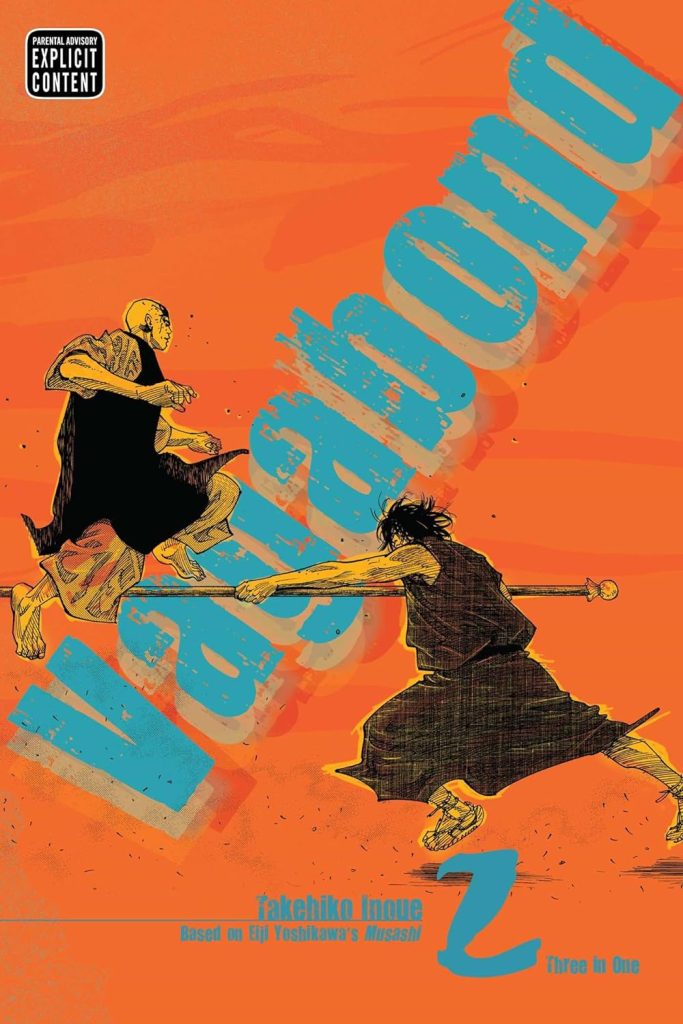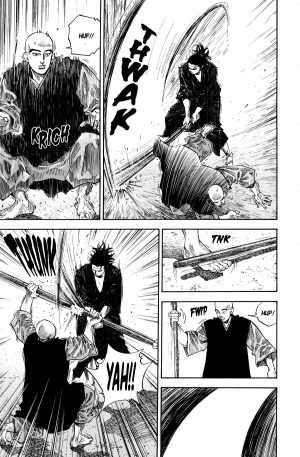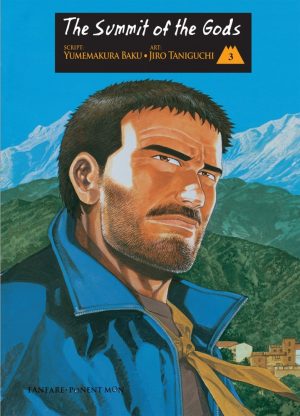Review by Karl Verhoven
This second massive collection continues Takehiko Inoue’s version of Miymoto Musashi’s journey to become a legendary Japanese samurai. It’s based on novelisation by EijiYoshikawa from the 1930s, and as these chapters begin Musashi has escaped from a burning sword school where he’d been challenging those learning.
Musashi has reached his early twenties, gradually becoming aware that very few swordsmen are able to match his natural talent, which has bolstered the confidence of youth, yet he also has contact with elders he acknowledges as wiser and will listen to. The monk who renamed him a few years previously reappears and has more wise advice telling Musashi to “be aware of yourself and accept yourself as you are. That is where your training should begin”. What Musashi doesn’t acknowledge is his inner rage. It supplies a determination that makes him an attractive test for Inshun, who’s skills are even greater than Mushashi’s.
The combat between the two of them occupies most of the middle section and is artistic virtuosity from Inoue, as he choreographs the contrast between raw rage and the refinement of natural talent through training. Inoue supplies timing, motion and contact precisely, while also concentrating on the expressions showing emotional changes, in Musashi’s case from confidence to uncertainty. Before and after the combat there are moments of serenity, and instead of having the cast walk through scrubland, Inoue highlights natural surroundings by placing people in forests, and under waterfalls.
It feeds into the spirituality throughout, as Musashi is given plenty of sound advice, yet takes little of if on board. By the end of this collection his greatest concern remains proving himself better than others, which speaks to esteem issues not yet addressed, although there is a brief flashback sequence involving Musashi’s dissolute father.
Inoue also returns to Musashi’s friend Matahachi. Readers know he’s responsible for an act of arson, and he’s used to show the path Musashi could be heading down without the calming voices he hears. Matahachi wants better for himself, but is an opportunist unconcerned about masquerading as someone else to advance, never mind that his chosen identity demands far greater skill than he possesses, which will eventually lead to revelation at best, or death at worst.
Vagabond remains a beautifully drawn series taking a slow path to fruition, yet with a compelling protagonist whose stumbles fascinate. Musashi’s progress is now best followed in these satisfying larger chunks, but used copies of Vagabond Vol. 4, Vol. 5 and Vol. 6 can be found. How popular is this collection, though? As of 2023 there have been sixteen printings.
The return bout between Musashi and Inshun takes place in Volume 3.





